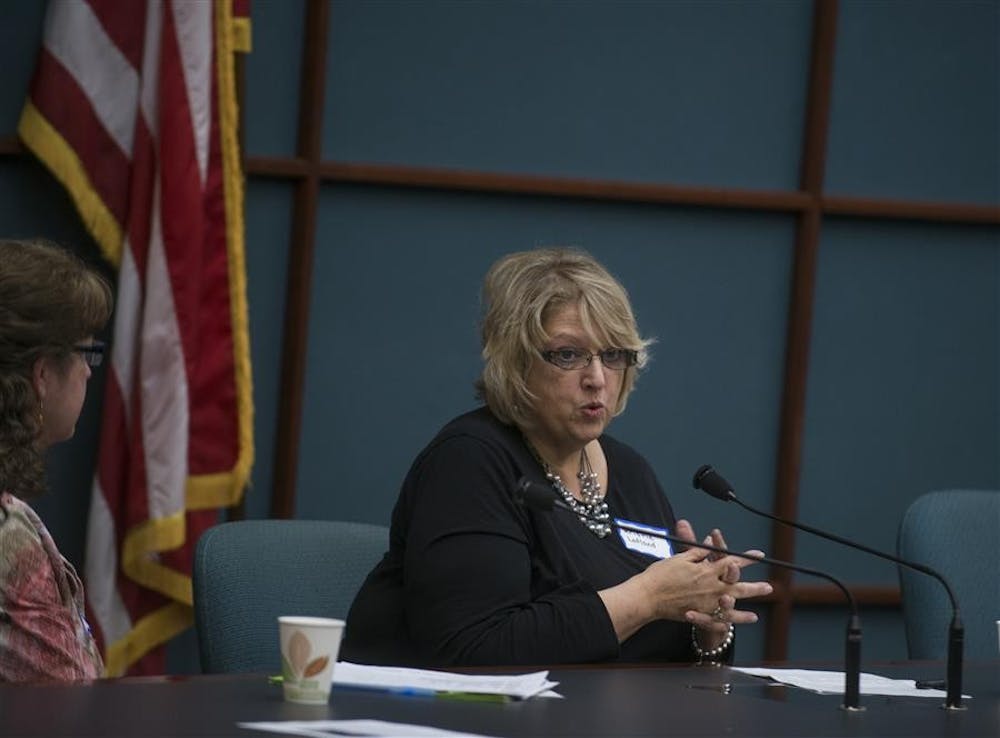In response to the increasing diagnoses of Autism Spectrum Disorder, the City of Bloomington Community and Family Resources Department organizes an annual program and invites professionals to share their knowledge and experiences.
Currently, 156 students in Monroe County Community School System have been diagnosed with some form of autism, MCCSC representative Michelle Wells said.
One in 68 children nationwide are at risk for autism, increasing from one in 150 in 2002, according to the Center for Disease Control.
Adria Nassim, who is diagnosed with mild autism disorder, joined a group of six professionals this year to share her experiences.
Though she wasn’t diagnosed with autism until 2006, the symptoms were present.
Doctors said Nassim suffered from a non-verbal learning disability.
“In second grade, I couldn’t tell time,” Nassim said. “In fifth grade, I couldn’t count money. Still, at age 28, that’s not an applicable life skill for me.”
Nassim said teachers often told her she was bright. Eventually, she came to IU to study English and minor in Spanish.
Despite having above-average intelligence, Nassim said she struggled with remembering how to get from one building to the next.
“I had to find a different IU student every day, and I would tell them I was a
British transfer student with high-functioning autism and ask where to go,” Nassim said. “I’ve lived in America all my life. But when I have to, I can do a very convincing British accent.”
Early detection is key to help children with autism succeed, said Dan Kennedy, an assistant professor in the Department of Psychological and Brain Sciences at IU.
Kennedy said experiments are being done with two- to six-month-old children to measure the amount of eye contact they make with others, one of many changes happening in the study of the disorder.
“No longer are we looking for a single neural difference that people with autism share,” Kennedy said.
Kristi Brown Loftland, who has worked with individuals living with autism for 40 years, echoed Kennedy’s thoughts.
“In my 40 years of experience, I’ve never met two who were alike,” Loftland said.
Wells said MCCSC schools have more to offer than ever before.
“We make sure teachers are trained to work with autistic individuals,” Wells said. “They are constantly being trained.”
Wells said the school offers iPads with speech-to-text applications and integrates smart boards into classrooms as part of a practice that is proven to help those with autism. The school works with individuals up to 21 years old.
Former school board member Joan Hart said funding wasn’t the only problem.
Allocating the funds and using them properly was also an issue, she said.
“It depended on the superintendent and what their focus was,” Hart said. “The system is broken, in my opinon. I know many kids who have never touched an iPad. The teachers are great, but the administration has gotten worse.”
Nassim said she feels optimistic about the future and left attendees in the room with what she said was her most important advice.
“The children you work with did not see you get that degree,” Nassim said. “The best tools are not things you get in a lecture. Have an open mind and an open heart. Don’t see us as your responsibility, something you have to do. If you see joy in us, we’ll find joy, too.”
Professionals discuss autism

Get stories like this in your inbox
Subscribe




